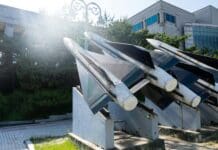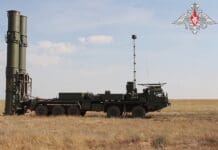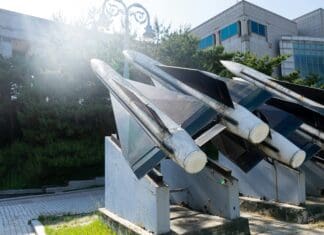This post is also available in:
 עברית (Hebrew)
עברית (Hebrew)
AeroVironment has launched its latest drone, the P550, at the Association of the United States Army’s Annual Meeting & Exposition in Washington, D.C. Designed to enhance battlefield awareness and operational effectiveness, the P550 can stay airborne for up to five hours on a single charge, making it an ideal candidate for reconnaissance missions and tactical strike operations.
With a wingspan of 5.2 meters and a weight of approximately 25 kilos, the P550 is an autonomous Group 2 eVTOL unmanned aircraft system (UAS) that can be remotely piloted or operated autonomously, adapting quickly to mission requirements. It is capable of carrying up to 6.8 kilos of payload, including bombs, cameras, or sensors.
One of the P550’s standout features is its modular open system approach (MOSA), allowing for easy integration with third-party payloads, data links, and mission planning software. This adaptability is essential for modern military operations where mission parameters can change rapidly. In the field, the drone can be reconfigured in under five minutes, enabling quick swaps of payloads and batteries without any specialized tools.
The drone boasts a 40 km link range, extendable to 60 km with DDL range, depending on ground control station capabilities. Its man-portable design means it can be easily transported in a small Humvee, and its tool-less quick-connect airframe allows for rapid assembly, getting the drone airborne in under ten minutes.
To ensure performance in contested environments, the P550 features a VNS Day/Night VIO navigation system with laser terrain matching, along with flexible radio options for secure communications.
AeroVironment has also partnered with Parry Labs to enhance the P550’s capabilities. The collaboration focuses on developing an open autonomy software framework, AVACORE, alongside SPOTR-Edge computer vision for onboard detection, which reduces the operational burden on drone operators.
The P550 represents a significant leap in drone technology, poised to serve the U.S. Army’s Long-Range Reconnaissance program and redefine military operational capabilities.


























